Nosferatu (2024): A well-deserved tribute to Murnau's work and german expressionism [Eng/Esp]
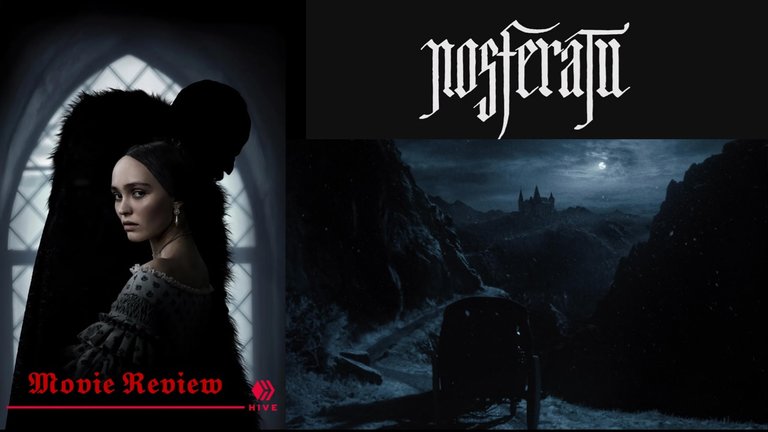

Greetings dear Movies & TV Shows community! This is my first contribution to the community and I wanted to do it with one of the movies I've been waiting for for years, more or less 9 years. That's right friends, I had great expectations with this great movie but first let me explain why I was so excited about this work.

Nosferatu as the greatest exponent of German expressionism.
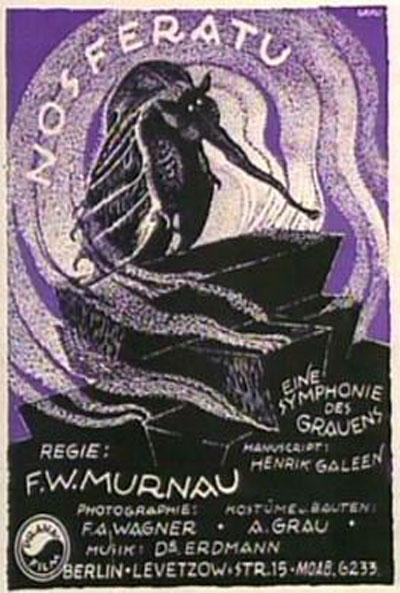
source: filmaffinity
This film Nosferatu (2024) is a remake of the 1922 work by the German director Friedrich Wilhelm Murnau and is the greatest exponent of German expressionism, an artistic movement that has fascinated me in the German country since it was a way of capturing the traumas of the Great War (or World War I) and Nosferatu released on March 4, 1922 became a cult work since in those years where cinema was taking its first steps this work became a real effort to develop much of the cinematographic language that is still used today. Hence the great contribution and affection that I have for this work and the reason why I was afraid that this 2024 remake would do real justice to this original film. But when I found out that the director of this Remake would be Robert Eggers, a director characterized by having an absolute respect for the works he adapts, and proof of this is the following article that I share with you:
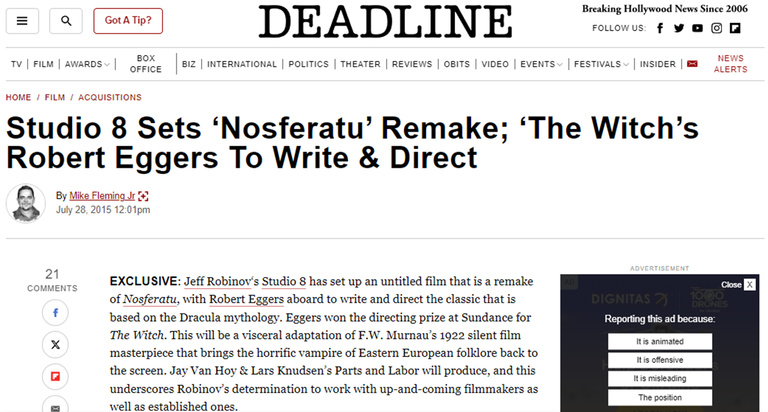
Source: Deadline
The project was given to the director 9 years ago! And understanding that by that year, the director was starting his film career, he decided to delay the project and mature professionally to finally adapt the wonderful work of F. W. Murnau. With this little introduction to highlight the historical weight that this work has, let's begin the review!

Nosferatu from 2024, as I said before, is a remake of the 1922 work, but what is it about? Well, this work is a very free adaptation of the book Dracula by Bram Stocker. Therefore, this remake tries to focus strictly on the 1922 film without worrying so much about whether or not it is faithful to the book. This is precisely where the charm of this film arises, as the original work was not copyrighted, the names of the characters had to be changed. Count Orlock would then be Dracula masterfully played by Bill Skarsgård for this film, since I didn't even recognize him with the makeup.
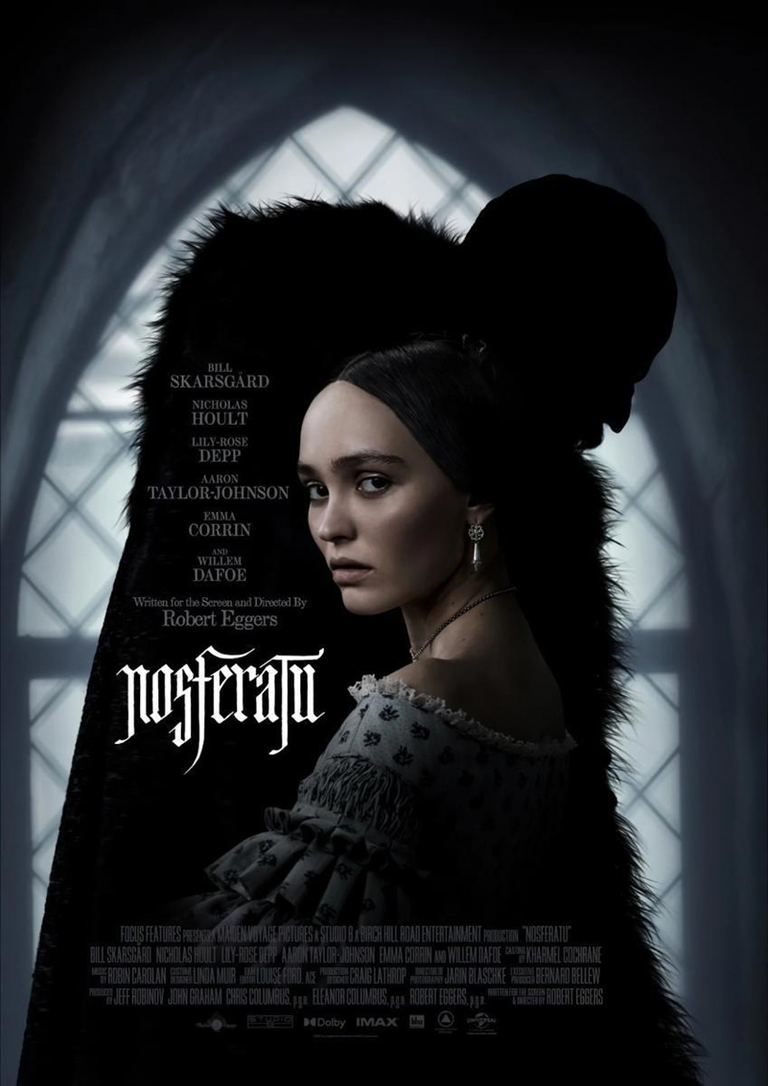 | 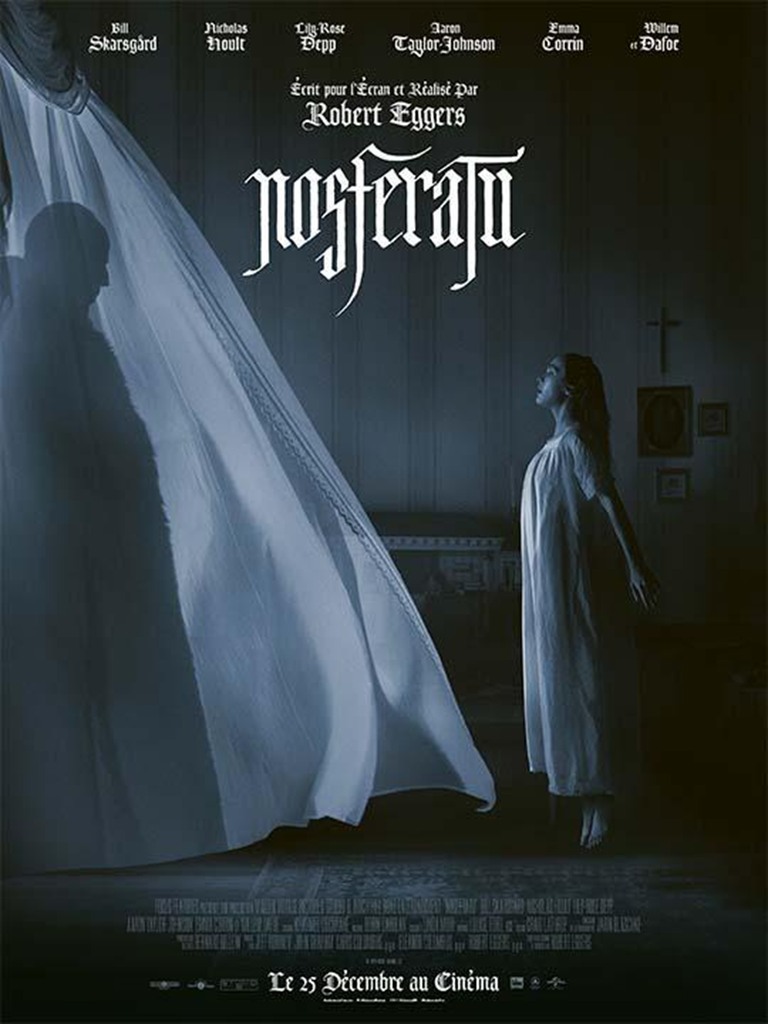 |
|---|
source: filmaffinity
In the film, Count Orlock is awakened by the whims of Ellen, who summons him, starting the plot, which I don't know if I should call it gothic horror, because historically it does, this story takes place in the 19th century during the Victorian era, but the concepts that the remake handles, expressed through the dialogues of the characters trying to understand an overwhelming evil force, make this film certainly a gothic horror film, but with touches of cosmic horror.

A vampire far from the romantic stereotype
Unlike the classic vampire stereotype in the long filmography that he has had in the cinema, where we have the classic aristocrat who has lived for centuries and who enjoys seducing maidens before executing his terrible act of hematophagy. In Nosferatu, the vampire is literally a carrier of the plague, condemned to live in a state of perpetual putrefaction, he can only bring death wherever he goes. This Nosferatu, like the one in the original work, does not discriminate between men, women and children; they are all prey to him. To understand this vampire archetype, it is necessary to understand that the producers of the original work were occultists and had a strong influence on the film. That is why it is worth highlighting the great work of historical research that the director did in order to be able to capture now with all the advantages that technology offers in the cinema the true appearance and origin of the Nosferatu, an aristocrat turned Necromancer who, by making a pact with the devil, ends up becoming the Nosferatu, the bringer of death.
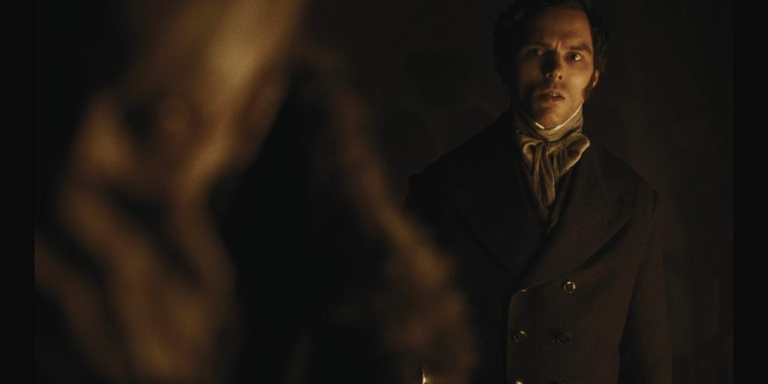
source: filmaffinity
The other element that I praised in this work is its respect for the nocturnal nature of the creature, because in Bram Stocker's book the vampire can walk in broad daylight among the living. But in 1922's Nosferatu, Count Orlock's exposure to the light of dawn is fatal, and this is respected by this film, an element that would be added to the popular culture about vampires and their weakness to light, a sign that this work, although it was born apocryphal and pursued by copyright, ended up becoming part of the vampire canon over time.

Direction and Photography
My favorite part of this movie, this director had already shown his talent in staging from very early on, The Witch (2014) is the best example and with Nosferatu he did not disappoint in the least. From the fidelity of the costumes, the recreation of a day in Germany in 1838 to the gloomy lands of Count Orlock that seems to have a dreamlike aspect that quickly turns into a nightmare when meeting the Count in person. I loved this because in a way I think it would be what director F. W. Munau wanted to achieve with his film, let's remember that it was 1922 and the limitations were enormous to achieve a gloomy effect in his silent film and from black and white he applied an ochre filter to emulate the night and sped up the film to give Count Orlock a supernatural appearance.
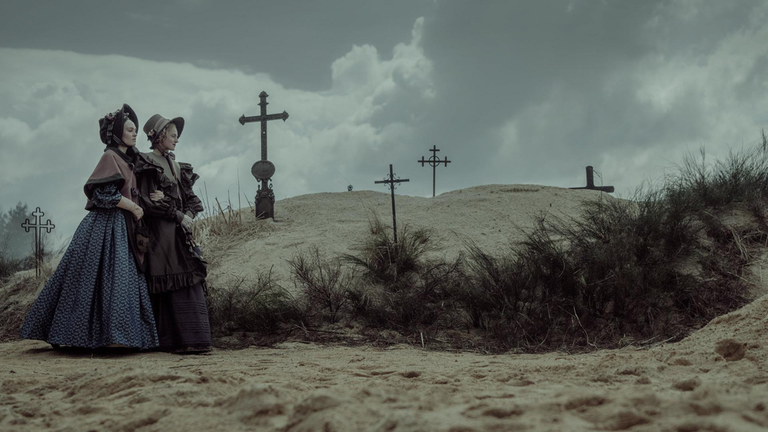 | 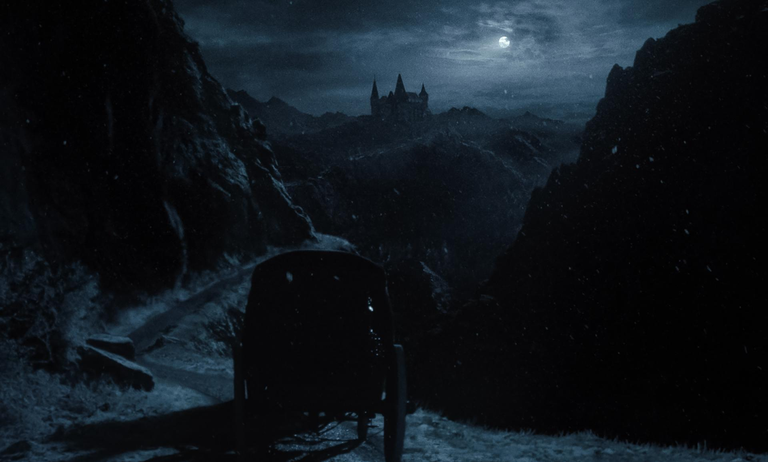 |
|---|
source: filmaffinity
The advantage of the fact that the original film was silent with subtitles is that it allowed the director to incorporate elements of the lore surrounding the Vampire and expand the story in more detail, such as all the esoteric and occult symbolism it has, giving it that air of cosmic horror.

Character Development
Although we already talked about Count Orlock as a fundamental pillar of this remake, what happens with the rest of the characters? Well, here is another strong point of the film and that is that the cast is up to the task. Starting with Lily-Rose Depp who gives a masterful performance as Ellen Hutter, the maiden who casts a spell and remains bound to the influence of the Nosferatu. It is truly terrifying how she suffers the attacks of the Nosferatu not only in her dreams but when the vampire seems to possess her. My second favorite character is Professor von Franz, a scholar of the occult arts, impeccably played by Willem Dafoe, who takes us into the dark and sinister nature of evil that ends up reaching the city of Wiaburg to spread the plague that threatens the lives of everyone. Particularly, it is these two characters that help expand the lore of this work, something that I enjoyed until the last second of this film.
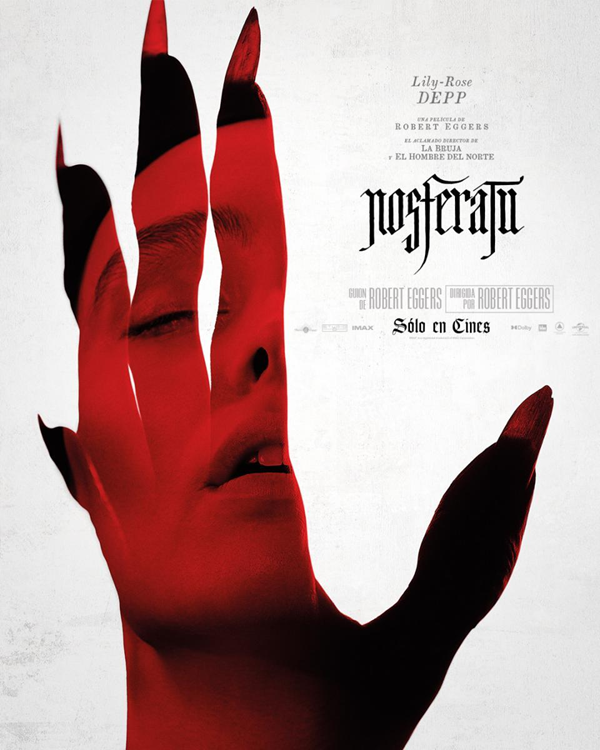 | 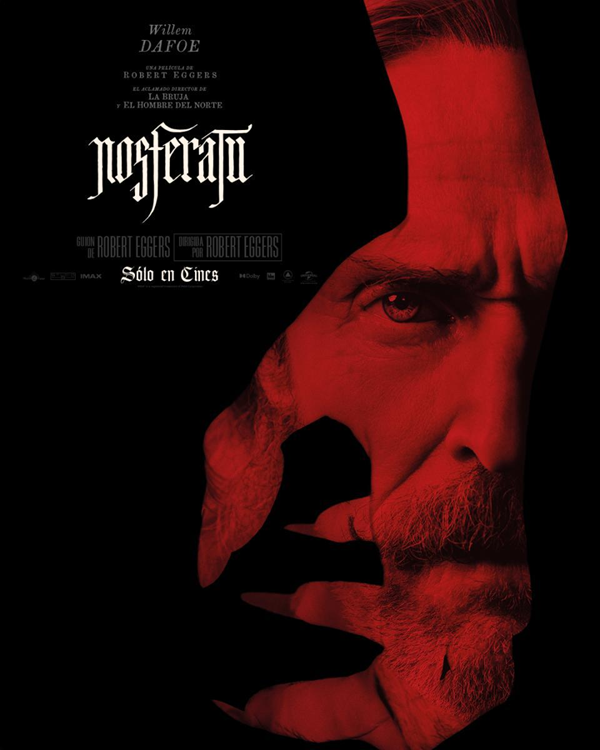 | 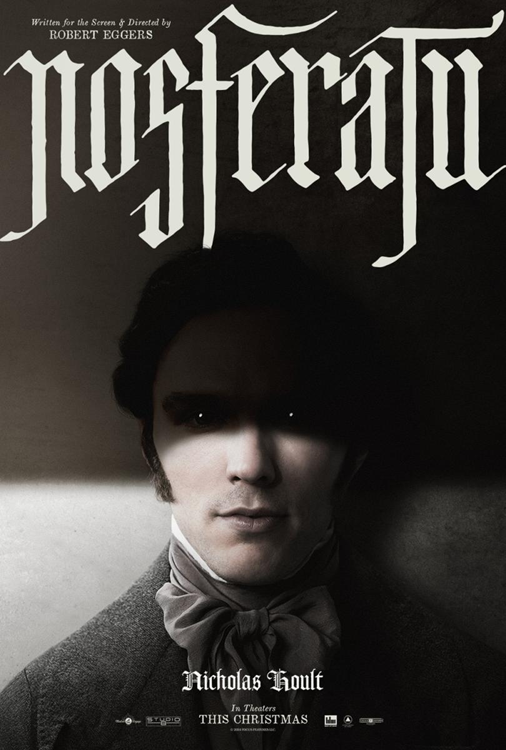 |
|---|
source: filmaffinity

Final thoughts
After making this long review where I shared with you the size of the commitment that this film had with the original work, the photography, direction and characters, it is worth asking ourselves the question: Is this film really good? Is it better than the original? Well, the answer to the first question is yes, Nosferatu (2024) is an intense horror film that, unlike La Buja, which has a slow pace, here the terror and anguish begin from the first minute. Now, does it surpass the work of F.W. Murnau? I wouldn't say that, I would tell you that it is a worthy tribute to the original film, doing justice to a work that was persecuted and almost disappeared from the history of cinema.
🎬 Official trailer
Well, friends, this was my review of Nosferatu. I won't lie to you, I was a little dissatisfied. I would have liked to go into even more detail about the story and the strong ontological and social component of German expressionism, but I wanted to limit myself to reviewing Nosferatu (2024) as an independent author's work. Perhaps in the next post I will make a retrospective review of what this artistic movement was and its meaning in contemporary cinema. I wish you good health.
Versión Español:


Saludos estimada comunidad de Movies & TV Shows! Este es mi primer aporte a la comunidad que realizo y quise hacerlo con una de las películas que estuve esperando durante años, más o menos unos 9 años. Así es amigos, tenía grandes expectativas con esta gran película pero antes déjame explicarte porque estaba tan emocionado por esta obra.

Nosferatu como el máximo exponente del expresionismo alemán.

source: filmaffinity
Esta película Nosferatu (2024) es un remake de la obra de 1922 del director alemán Friedrich Wilhelm Murnau y es el máximo exponente del expresionismo alemán una corriente artística que me ha fascinado del país germano ya que era una manera de plasmar los traumas de la Gran Guerra (o 1era guerra mundial) y Nosferatu estrenada el 4 de marzo de 1922 se convirtió en una obra de culto ya que en aquellos años donde el cine estaba dando sus primeros pasos esta obra se convirtió en un esfuerzo real por desarrollar mucho del lenguaje cinematográfico que incluso al día de hoy se sigue utilizando. De allí el gran aporte y cariño que le tengo a esta obra y la razón por la cual tenía temor de que este remake del 2024 le hiciera real justicia a esta película original. Pero al enterarme que el director de este Remake sería Robert Eggers un director caracterizado por tener un absoluto respeto por la obras que adapta y prueba de ello es el siguiente artículo que te comparto:

Source: Deadline
El proyecto le fue dado al director hace 9 años! Y entendiendo el director que para aquel año, estaba iniciando su carrera cinematográfica decidió retrasar el proyecto y madurar profesionalmente para finalmente adaptar la maravillosa obra de F. W. Murnau. Con esta pequeña introducción para resaltar el peso histórico que tiene esta obra, comencemos la reseña!

Nosferatu de 2024 como dije anteriormente es un remake de la obra de 1922, pero ¿De que se trata? pues bien, esta obra es una adaptación muy libre del libro Drácula de Bram Stocker. Por tanto este remake trata de enfocarse estrictamente sobre la película de 1922 sin preocuparse tanto de si es fiel o no al libro. Precisamente aquí es donde surge el encanto de esta película, al no tener los derechos de autor la obra original tuvo que cambiar los nombres de los personajes, el Conde Orlock sería entonces Drácula magistralmente interpretado por Bill Skarsgård para esta película ya que con el maquillaje ni lo reconocí.
 |  |
|---|
fuente: filmaffinity
En la película, el Conde Orlock es despertado por los caprichos de Ellen quien lo invoca dando inicio a la trama, que no sé si llamarlo terror gótico porque históricamente si, esta historia ocurre en el siglo 19 durante la época victoriana, pero los conceptos que maneja el remake expresado a través de los diálogos de los personajes tratando de entender una fuerza maligna sobrecogedora hace que esta película ciertamente sea de terror gótico pero con toques de horror cósmico.

Un vampiro alejado del estereotipo romántico
A diferencia del estereotipo clásico del vampiro en la larga filmografía que ha tenido en el cine, donde tenemos el clásico aristócrata que ha vivido siglos y que disfruta seducir a doncellas antes de ejecutar su terrible acto de hematofagia. En Nosferatu, el vampiro es literalmente un portador de la peste, condenado a vivir en un estado de putrefacción perpetua, solo puede llevar la muerte a donde quiera que vaya. Este nosferatu al igual que el de la obra original no discrimina entre hombres, mujeres y niños, todas son presas para él. Para entender este arquetipo de vampiro es necesario entender que los productores de la obra original eran ocultistas y tuvieron una fuerte influencia sobre la película por eso es de destacar el gran trabajo de investigación histórica que hizo el director para poder plasmar ahora con todas las ventajas que ofrece la tecnología en el cine el verdadero aspecto y origen del Nosferatu, un aristócrata devenido en Nigromante que al hacer un pacto con el demonio termina convirtiéndose en el Nosferatu, el portador de la muerte.

fuente: filmaffinity
El otro elemento que alabé de esta obra es su respeto por la naturaleza nocturna de la criatura, pues en el libro de Bram Stocker el vampiro puede caminar a plena luz del día entre los vivos. Pero en Nosferatu de 1922 la exposición del Conde Orlock a la luz del alba es mortal y esto es respetado por esta película, un elemento que se añadiría a la cultura popular sobre los vampiros y su debilidad a la luz, una muestra de que esta obra aunque nació siendo apócrifa y perseguida por derechos de autor termino con el tiempo de convertirse en parte del canon de los vampiros.

Dirección y Fotografía
Mi parte favorita de esta película, este director ya había mostrado desde muy temprano su talento en las puesta en escena, La Bruja (2014) es el mejor ejemplo y con Nosferatu no decepcionó en lo más mínimo. desde la fidelidad del vestuario, la recreación de un día en la Alemania de 1838 hasta las lúgubres tierras del Conde Orlock que parece tener un aspecto onírico que rápidamente se convierte en una pesadilla al conocer al Conde en persona. Esto me encantó por que en cierta manera creo que si sería lo que el director F. W. Munau quería lograr con su película, recordemos que era 1922 y las limitaciones eran enormes para lograr un efecto lúgubre en su película muda y de blanco y negro aplicaba una filtro ocre para emular la noche y aceleraba la película para darle un aspecto sobrenatural al Conde Orlock.
 |  |
|---|
fuente: filmaffinity
La ventaja que ofrece el hecho que la película original haya sido muda con subtítulos, es que le permitió al director incorporar elementos del lore al rededor del Vampiro y expandir con más detalle la historia, como todo el simbolismo esotérico y ocultista que tiene, dándole ese aire de horror cósmico.

Desarrollo de Personajes
Aunque ya hablamos del Conde Orlock como pilar fundamental de este remake ¿Que sucede con el resto de personajes? pues bien, aquí esta otro punto fuerte de la película y es que el reparto esta a la altura del compromiso. Empezando por Lily-Rose Depp que hace una actuación magistral como Ellen Hutter, la doncella que hechiza y se mantiene atada a la influencia del Nosferatu, es verdaderamente terrorífico como sufre los ataques del nosferatu no solo en los sueños sino cuando el vampiro parece poseerla, mi segundo personaje favorito es el Prof. von Franz, estudioso de las artes ocultas impecablemente interpretado por Willem Dafoe, que nos adentra en la naturaleza oscura y siniestra del mal que termina llegando a la ciudad de Wiaburg para extender la peste que amenaza la vida de todos. Particularmente son estos 2 personajes los que ayudan a expandir el lore de esta obra cosa que disfrute hasta el último segundo de esta película.
 |  |  |
|---|
fuente: filmaffinity

Reflexiones finales
Después de hacer esta larga reseña donde te compartí el tamaño del compromiso que tenía esta película con la obra original, la fotografía, dirección y personajes, vale hacernos la pregunta: ¿Es realmente buena esta película? ¿Es mejor que la original? pues la respuesta a la primera pregunta es que sí, Nosferatu (2024) es una película de terror intenso que a diferencia de La Buja que tiene un ritmo lento, aquí el terror y la angustia comienza desde el primer minuto. Ahora, ¿supera a la obra de F.W. Murnau? yo no diría eso, yo te diría que es un digno homenaje a la película original haciéndole merecida justicia a una obra que fue perseguida y que casi desaparece de la historia del cine.
🎬 Tráiler oficial
Y bien amigos esta fue mi reseña de Nosferatu, no les mentiré quedé un poco insatisfecho, me habría gustado extenderme todavía más en la historia y el fuerte componente ontológico y social de expresionismo alemán, pero quise limitarme a reseñar de Nosferatu (2024) como una obra de autor independiente. Quizás en el próximo post haga una reseña retrospectiva de lo que fue esta corriente artística y de su significado en el cine contemporáneo. Saludos!

The images to create the cover and the content of this review were taken from filmaffinity. The translation was done with the Deepl translate.
Las imágenes para crear la portada y el contenido de esta reseña fueron tomadas de filmaffinity. La traducción fue realizada con Deepl translate.

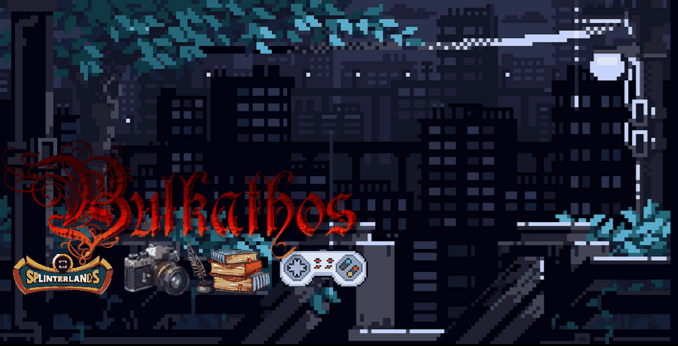
¡Excelente post cómo siempre, Bulkathos! !PIZZA !BBH !HUESO !DIY
!BHRT
!BHRT
You can query your personal balance by
!DIYSTATShttps://x.com/Astreon3/status/1887617642066022504
Me parece muy bien estructurada tu publicación, además es muy llamativa tu recomendación es esta tendencia de películas.
Nosferatu, lo apuntaré.
Saludos
He visto mucho esta película como recomendaciones, pero aún no he tenido tiempo de verla, por lo que he podido notar en tu publicación, no te convenció del todo, siempre me pasa cuando veo una película como esta, que siempre dejan que uno desee más de esas películas o series y después nos dejan con esa sensación tan mala de querer más de esa película o serie y no lo continúan como es debido.
Me han recomendado ver está película, pero aún no me animo ya que los filmes se terror no son mis favoritos, aún así le daré una oportunidad.
Excelente reseña. Gracias por compartir tu opinión sobre esta producción. Saludos!
Por como la narras, me provoca verla, aunque no te convenciera del todo, siento esa curiosidad.
Saludos, espero dar mis expectativas.
Wow amigo, interesante films me gusta lo enigmagico, muy bien explicada.
From Venezuela, our witness drives decentralization and the adoption of Web3 technology, creating opportunities for the local community and contributing to the global ecosystem. // Desde Venezuela, nuestro testigo impulsa la descentralización y la adopción de la tecnología Web3, generando oportunidades para la comunidad local y contribuyendo al ecosistema global.
Sigue, contacta y se parte del testigo en: // Follow, contact and be part of the witness in:
Because of a lot of the hype surrounding this film I went into it with expectations that were too high for them to reach. In the end I actually ended up turning it off and it took me 2 days to finish it. That isn't to say that it is a bad film because it isn't, I just felt like it was basically exactly the same film as Brahm Stoker's Dracula with Keanu Reeves from the 90's.
I'm happy that it wasn't a CGI nightmare though, and overall I would say that this is worth seeing for the right person in the right mood.
$PIZZA slices delivered:
@cpol(10/15) tipped @bulkathos